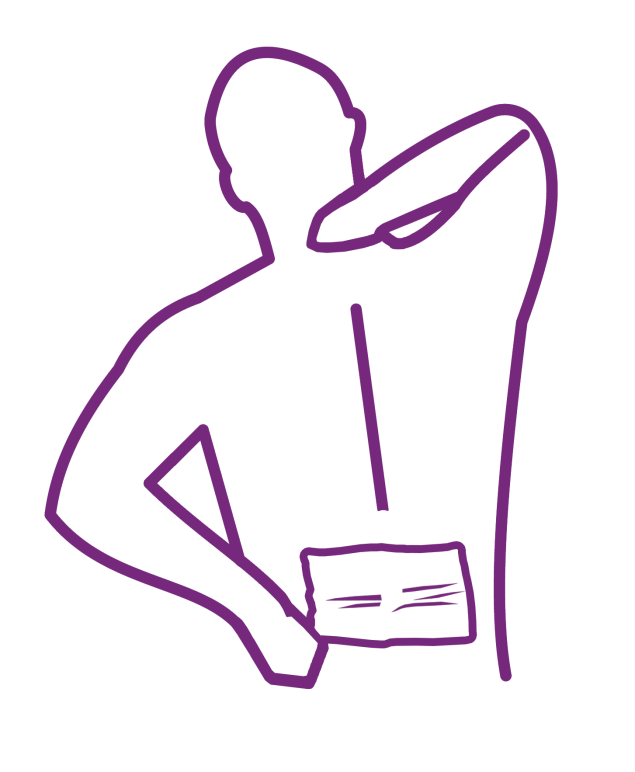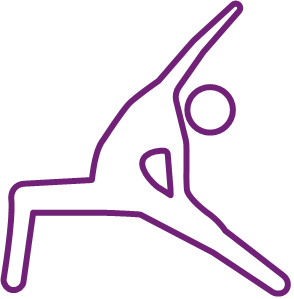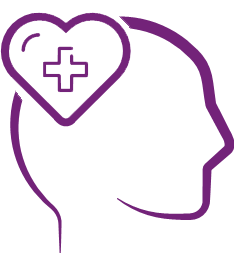Nonopioid Therapies for Pain Management
All patients should receive treatment for pain that provides the greatest benefits relative to risks. Use of nonpharmacologic and nonopioid pharmacologic therapies should be maximized as appropriate because they do not carry the same risks as opioids. The 2022 CDC Clinical Practice Guideline for Prescribing Opioids for Pain (2022 Clinical Practice Guideline) has expanded guidance on evidence-based nonopioid options for pain.

Nonopioid therapies are at least as effective as opioids for many common types of acute pain (Recommendation 1). Clinicians should maximize use of nonpharmacologic and nonopioid therapies as appropriate for the specific condition and patient and only consider opioid therapy for acute pain if benefits are anticipated to outweigh risks to the patient. Before prescribing opioid therapy for acute pain, clinicians should discuss with patients the realistic benefits and known risks for opioid therapy.
Clinicians can consider using nonopioid therapies to treat common types of acute pain including:
- Low back pain
- Neck pain
- Dental pain
- Kidney stone pain
- Pain related to musculoskeletal injuries (such as sprains, strains, tendonitis, and bursitis)
- Pain related to minor surgeries typically associated with minimal tissue injury and mild postoperative pain (e.g., simple dental extraction)
- Headaches, including episodic migraine
Many acute pain conditions can often be managed most effectively with nonopioid medications. Noninvasive and nonpharmacologic approaches to acute pain also have the potential to improve pain and function without risk for serious harms. Here are some nonopioid medications and noninvasive nonpharmacologic approaches that can be used to treat acute pain.
| Nonopioid Medications | Noninvasive Nonpharmacologic | |
|
|
|
| For additional information regarding nonopioid therapy approaches for treating acute pain, please refer to Recommendation 1 in the 2022 Clinical Practice Guideline. | ||

Nonopioid therapies are preferred for subacute and chronic pain (Recommendation 2). Clinicians should maximize use of nonpharmacologic and nonopioid pharmacologic therapies as appropriate for the specific condition and patient and only consider initiating opioid therapy if expected benefits for pain and function are anticipated to outweigh risks to the patient.
Several nonopioid pharmacologic therapies can be used for chronic pain conditions. Some examples include:
- Topical NSAIDs
- Oral NSAIDs
- Acetaminophen
- Tricyclic and tetracyclic antidepressants
- Serotonin and norepinephrine reuptake inhibitor (SNRI) antidepressants
- Anticonvulsants (e.g., pregabalin/gabapentin)
- Capsaicin and lidocaine patches
Nonopioid medications are associated with certain risks, particularly in older adults, pregnant patients, and patients with certain comorbidities such as cardiovascular, renal, gastrointestinal, and liver disease.
For more detailed guidance on the use of nonopioid medications to treat acute, subacute, and chronic pain, please refer to the 2022 Clinical Practice Guideline.
Many noninvasive, nonpharmacologic approaches can improve pain and function without risk for serious harms. Examples of noninvasive, nonpharmacologic approaches that can be used to manage pain include:
- Exercise (such as aerobic, aquatic, and/or resistance exercise)
- Exercise therapy (a prominent modality in physical therapy)
- Mind-body practices (e.g., yoga, tai chi, qigong)
- Weight loss
- Psychological therapy (e.g., cognitive behavioral therapy)
- Manual therapies
- Mindfulness-based stress reduction
- Low-level laser therapy
- Acupuncture
- Massage
- Spinal manipulation
Exercise, mind-body interventions, and behavioral treatments (including cognitive behavioral therapy and mindfulness practices) can encourage active patient participation in the care plan and help address the effects of pain in the patient’s life.

Despite their favorable benefit-to-risk profile, noninvasive nonpharmacologic therapies are not always covered or fully covered by insurance. Access and cost can be barriers for patients, particularly people who have low incomes, do not have health insurance or have inadequate insurance, have transportation challenges, or live in rural areas where services might not be available.
Walking in public spaces

Use of public recreation facilities for group exercise

While the cost may vary, physical therapy can be helpful, particularly for patients who have limited access to safe public spaces or public recreation facilities for exercise or have not improved with low-intensity physical exercise.

Physical activity can provide additional health benefits such as preventing or reducing symptoms of depression.2

Health insurers and health systems can improve pain management and reduce medication use and associated risks by increasing reimbursement for and access to effective noninvasive, nonpharmacologic therapies. Clinicians should become familiar with low-cost options for pain management in their communities so they can refer patients to low-cost services.
- Noninvasive Treatments for Acute, Subacute, and Chronic Low Back Pain: A Clinical Practice Guideline From the American College of Physicians (2020)
- Nonpharmacologic and Pharmacologic Management of Acute Pain From Non–Low Back, Musculoskeletal Injuries in Adults: A Clinical Guideline From the American College of Physicians and American Academy of Family Physicians (2021)
- American Dental Association: Statement on the Use of Opioids in the Treatment of Dental Pain (2016)
- Pharmacologic Stepwise Multimodal Approach for Postpartum Pain Management ACOG Clinical Consensus No. 1 (2021)
- Choosing Wisely in Headache Medicine: The American Headache Society’s List of Five Things Physicians and Patients Should Question (2013)
- The American Academy of Neurology’s Top Five Choosing Wisely recommendations (2013)
- Dowell D, Ragan KR, Jones CM, Baldwin GT, Chou R. CDC Clinical Practice Guideline for Prescribing Opioids for Pain — United States, 2022. MMWR Recomm Rep 2022;71(No. RR-3):22. DOI: http://dx.doi.org/10.15585/mmwr.rr7103a1
- 2018 Physical Activity Guidelines Advisory Committee. 2018 physical activity guidelines advisory committee scientific report. Washington, DC: US Department of Health and Human Services, Office of Disease Prevention and Health Promotion; 2018. https://health.gov/our-work/nutrition-physical-activity/physical-activity-guidelines/current-guidelines/scientific-report
